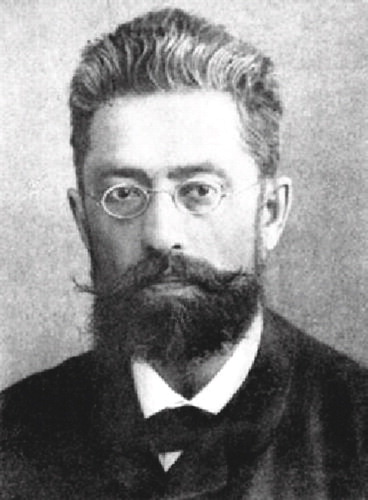Victor Kandinsky, M.D., 1849–1889
Victor Khrisanfovich Kandinsky, the son of a merchant, was born in a small village in Siberia on March 24, 1849. In 1872 he finished medical school and began to practice as a general physician in a Moscow hospital. In 1876 he became psychotic and was hospitalized. After his discharge, he turned his attention to psychiatry. As a psychiatrist, he wrote his first book, which was based on his morbid experiences. Kandinsky described the psychopathological symptoms included in the term “mental automatism” (telepathy, reading and broadcasting thoughts, enforced speaking, and enforced motor movements). This syndrome was later called the Kandinsky-Clerambault syndrome (1). Kandinsky suffered the final deterioration of his mental state in 1889. In September of that year, when he felt his psychotic symptoms were returning, he committed suicide (2).
Kandinsky’s main contributions to psychiatry were in three areas: psychopathology, psychiatric classification, and forensic psychiatry. In psychopathology, his works on hallucinations included a detailed description of his own experiences. In the domain of psychiatric classification, he elaborated a system with 16 diagnostic categories of mental illness that was quite sophisticated for his time (2, 3). His third major contribution was in forensic psychiatry. In On the Matter of Irresponsibility(4) and in his papers and lectures, Kandinsky argued against a general and undifferentiated approach, suggesting that every case should be examined individually according to the specific diagnosis and the person’s clinical state at the time the crime was committed. We believe that Kandinsky’s work exemplifies a fine model of coping with a difficult mental disorder (3).
From the Ministry of Health Mental Health Center, Faculty of Health Sciences, Ben-Gurion University of the Negev, Be’er-Sheva, Israel. Address correspondence and reprint requests to Dr. Lerner, Be’er-Sheva Mental Health Center, PO Box 4600, Be’er-Sheva, 84170, Israel; [email protected] (e-mail). The picture of Victor Kandinsky, 1880, is from the collection of Dr. Lerner"s father.

Victor Kandinsky, M.D., 1849–1889
1. Kandinsky VK: [About hallucinations.] Meditsinskoe Obozrenie 1880; 13:815–824 (Russian)Google Scholar
2. Rokhlin LL: The Life and Works of the Eminent Russian Psychiatrist VKh Kandinsky (1849-1889). Moscow, Meditsina, 1975Google Scholar
3. Lerner V, Witztum E: Victor Kandinsky, MD: psychiatrist, researcher and patient. Hist Psychiatry 2003; 14(53, part 1):103-111Google Scholar
4. Kandinsky VKh: [On the Matter of Irresponsibility.] Moscow, Izdanie EK Kandinskoi, 1890 (Russian)Google Scholar



